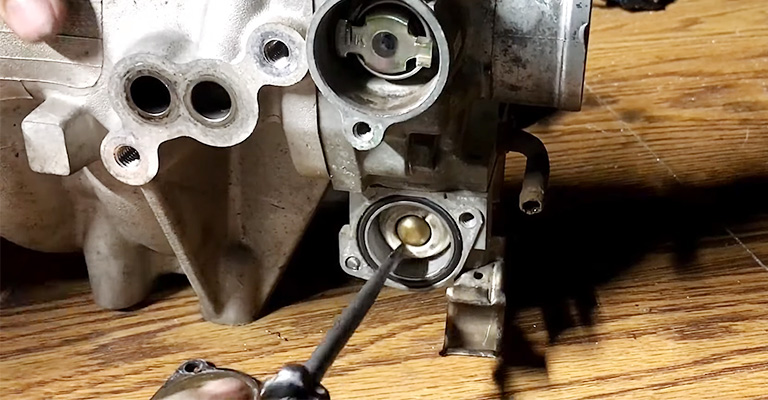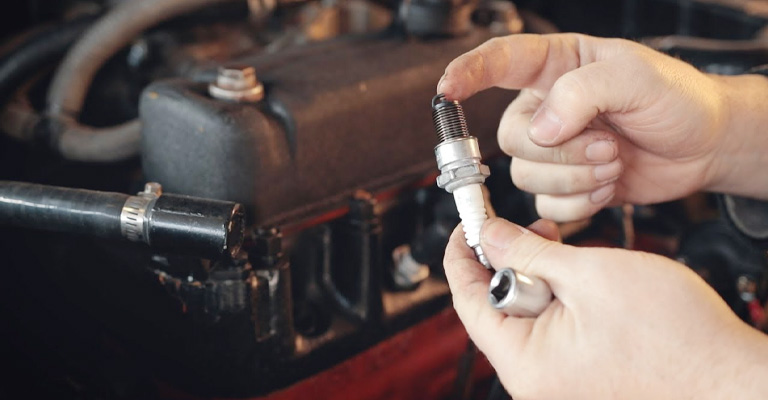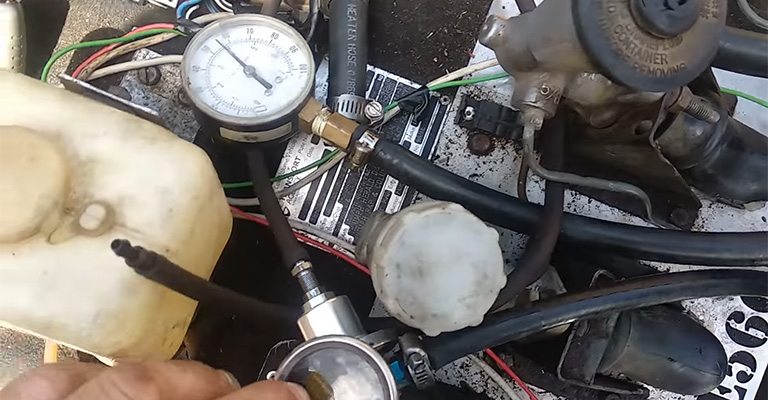Honda idle surge when warm is a common issue experienced by many Honda vehicle owners. It is characterized by an unsteady or fluctuating engine RPM when the vehicle is warm, causing it to run rough or stall.
This problem can be both frustrating and dangerous, particularly when driving at low speeds or coming to a stop.
Understanding the causes of Honda idle surge when warm is crucial in resolving the issue and ensuring the vehicle’s safety.
In this article, we will delve into the reasons behind Honda’s warm engine surge and offer practical solutions for fixing it.
Whether you’re a Honda owner or simply interested in automotive technology, this article will provide valuable information on Honda idle surge when warm.

The Honda Idle Surge When Warm: Most Common Problem Explained & Fixes
Especially in an older Honda that appears to be in perfect working order, idle surge can be an annoying and challenging problem.
Your fast idle valve has a problem if your Honda has an intermittent idle surge or fluctuates when the vehicle is warmed up.
In your Honda, the Fast Idle Valve is responsible for controlling idle. This replaces the carbureted mechanical system that was used in older vehicles.
When clogged, the FITV fails to function and is replaced by the mechanical fast idle system.
Rather than spending money on a mechanic to diagnose your problems, try our How To Fix Honda Idle Surge DIY article.
How To Fix Honda Idle Surge When Warm

It is common for Hondas equipped with Electronic Fuel Injection to have a passage in the intake manifold that controls the idle speed. Unlike air entering your engine through your throttle blade, this passage is completely independent.
After your EFI Honda has warmed up, this passage provides unmetered air for your idle controller to use.
FITVs help controls the flow of air into the engine and the idle of the engine. FITVs are easily tested by finding them and capping their nipples to see if the surging ends.
The Honda must be at the proper operating temperature before you test the FITV. In addition to the wax pellet inside the fast idle valve, you will find a thermowax pellet inside the thermostat.
The FITV will undoubtedly be affected once this pellet wears out or the seal fails. To check if your FITV outlets are warm, touch them when your engine is at its proper operating temperature.
It is recommended that the Honda FITV be opened normally when the engine is cold and gradually closed as it warms up. There is a possibility that your thermowax pellet is damaged or simply worn when your Honda experiences idle surge or fails to idle when warm.
An engine that does not seal properly causes irregular idle and fluctuations in RPM.
In addition, your Honda FITV could malfunction or be stuck closed. In this case, your Honda would not surge in idle speed but immediately shut down or stall.
To fix this issue, you must remove the screws on top of the FITV and the unit’s cover. When your FITV works correctly, you should feel a suction at the top nipple.
Caution:

It’s common to find Honda owners with idle surge issues when they experience problems with their FITV, and we’ve seen this before. The FITV differs from the IAC or idle air controller found on OBDII vehicles.
IACs or Idle Air Controllers are called EACVs or Electronic Air Control Valves. It is important to check your FITV if your Honda has a surging idle after checking your IAC.
FITVs are usually located under the throttle body and incorporated into the throttle body’s passages. Your Fast Idle Thermo Valve can be found below your throttle body opening when you remove the intake snorkel.
To get it out, it is necessary to undo three 10mm bolts that secure the FITV to the throttle body. Despite some places on the internet asking you to take this FITV apart, disassembling it isn’t so useful.
Recommendation From Honda
A replacement thermowax pellet is required by Honda, and you cannot serve anything inside the FITV unit without one.
Remove your FITV unit and inspect the sealing rings to ensure the seals or mounting aren’t damaged. Replace your replacement FITV by carefully transferring the gasket over.
Connect the vacuum lines after replacing your FITV and warm up your engine. You should now have a correctly functional brand new FITV in your Honda at the proper operating temperature. Now that you know How To Fix Honda Idle Surge by replacing your FITV, you can go on to the next step.
Troubleshooting & Other Potential Causes of Engine Surging
The most common causes of engine surging are listed below. Some DIY maintenance is relatively easy and cheap, but some requires a professional’s inspection and repair.
Weak Spark Caused By An Ignition System

Many possible ignition system problems can lead to a weak ignition spark, including faulty distributor caps, rotors, wires, spark plugs, and coil packs.
Cylinders with weak combustion cannot deliver full power to the crankshaft. The spark plug will be fouled by unburned fuel.
As a result, the ignition demand will increase as a result of the loss of power. Surges in the engine will result from overcompensation by the Electronic Control Module.
The fix: You can troubleshoot and fix this problem yourself. Make sure the distributor cap, rotor, ignition wires, and spark plugs are in good working order. If not, check for faulty coil packs.
Wrong Ignition Timing
An engine’s chamber would not be able to burn without a spark, as the air-fuel mixture would not ignite. An electrical signal from the ignition coil will be sent to the spark plugs at a predetermined time to ignite the mixture of air and fuel.
Such ignitions must be timed precisely. An incorrect ignition timing will result in inefficient combustion, affecting the engine’s performance, and the air and fuel ratio will be unburned efficiently.
Fuel and air mixtures will ignite too early in the combustion cycle if the timing is too advanced or too early than it should be. The engine can overheat as a result. An overheated engine can cause surges.
The fix: Get the ignition timing adjusted by a professional.
Fuel Pressure Regulators Operating At Low Pressure

There can be an incorrect fuel volume or fuel pressure in the fuel system if the fuel pump fails or the fuel pressure regulator is not functioning properly.
These deviations will result in cycles of engine surging if fuel pressure is reduced or the engine is running lean, as described above.
The fix: You probably won’t be able to do this yourself. Use a fuel pressure gauge to check the fuel pressure. Mechanics can repair or replace a fuel pressure regulator if it’s low.
Engine Running Too Hot
An engine can run too hot when coolant levels are low or air bubbles in the cooling system.
The head gaskets of an engine can blow when it’s overheated, leading to leaks of coolant and air being drawn in. The engine surging cycle occurs similarly to when you run on bad gasoline, as explained above.
The fix: Refill the coolant or remove air from the cooling system.
Electronic Control Module’s Adjustment
It automatically adjusts air intake, fuel injection, and spark plug timing when any of an engine’s carefully controlled parameters deviates from what the Electronic Control Module expects.
Engine surging problems are almost always caused by this Electronic Control Module overcompensating.
Faulty Electronic Control Module
By regulating the operation of many components, the Electronic Control Module ensures the engine gets what is optimal for optimal performance and compensates when deviations occur.
The Electronic Control Module can malfunction for any reason, resulting in an engine surge when it injects more fuel into the combustion engine.
The fix: You shouldn’t attempt this on your own. A mechanic should test the Electronic Control Module; if necessary, components should be replaced or repaired.
Can Spark Plugs Cause Idle Surge?
It is also possible for a bad spark plug to cause misfiring, surging, or hesitating. Damaged spark plug tips can cause engine misfiring. A surging or hesitating engine may indicate an issue with the spark plugs if too much air is being drawn into the engine.
Final Words
Several factors can cause an idle issue; in fact, it may still exist to some extent due to the nature of a 4-cylinder engine. Valve adjustment should always be the first step. When done correctly, this makes a big difference in smoothing out the idle; things can get worse if done incorrectly.

Leave a Reply